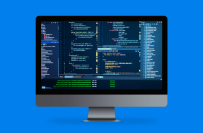
Law Services Website Development in Laravel
$5000-10000 USD
Açık
İlan edilme: yaklaşık 16 saat önce
•
6 gün içinde sona eriyor
$5000-10000 USD
Teslimde ödenir
Here's a detailed project plan for developing a legal services website using Laravel and Vue.js in the first phase, followed by a mobile application using Flutter in the second phase. The first phase should be completed within three months, and the second phase within another three months:
Project Plan for Legal Services Website and Mobile Application
Phase 1: Website Development
1. Project Overview The goal of this phase is to create a comprehensive legal services website using Laravel for the backend and [login to view URL] the frontend. The website will offer various legal, judicial, and legislative services to lawyers and litigants. Key functionalities will include user registration, profile management, document uploads, online payments, online form submissions for service requests, request tracking, live chat support, FAQ section, service information screens, document delivery via a shipping company, back-office screens for managing requests, and a system for monitoring service quality through performance indicators and customer surveys.
2. Objectives
To provide a user-friendly platform for accessing legal services.
To facilitate secure online payments for legal services.
To ensure efficient delivery of legal documents through a reputable shipping company.
To provide a robust back-office system for managing service requests and client interactions.
To monitor and ensure the quality of the services provided.
3. Key Features
3.1. User Registration and Profile Management
Users (lawyers and litigants) can create accounts and manage their profiles.
Registration will capture essential information such as name, contact details, and professional credentials.
Users can update their profiles as needed.
3.2. Online Service Catalog
A comprehensive list of legal, judicial, and legislative services offered by the platform.
Detailed descriptions of each service, including pricing and estimated delivery times.
3.3. Service Request and Tracking
Users can submit requests for legal services through an intuitive online form.
Requests can be filled out online and downloaded as PDFs, stamped with a pre-registered electronic signature or a system-generated one.
Each request is assigned a unique tracking number for easy monitoring.
Users can view the status of their requests, including acceptance and completion, in real-time.
3.4. Secure Online Payments
Integration with secure payment gateways to facilitate online payments.
Users can pay for services using various payment methods (credit card, debit card, etc.).
Payment confirmations and receipts are automatically generated and emailed to users.
3.5. Document Delivery via Shipping Company
Collaboration with a reputable shipping company for document delivery.
Automated scheduling and tracking of document shipments.
Users receive notifications and tracking details for document deliveries.
A system for tracking both digital images and physical originals of documents.
3.6. Back-Office Management
Dedicated back-office screens for processing service requests.
Staff can view, update, and manage requests through an administrative dashboard.
Integration with CRM systems for efficient client management and communication.
3.7. Live Chat Support
Live chat functionality for real-time support and assistance.
Integrated with the back-office system for seamless issue resolution.
3.8. FAQ Section
A comprehensive FAQ section to address common queries and concerns.
3.9. Service Information Screens
Detailed screens providing information about the various services offered.
3.10. Service Quality Monitoring
Systems for monitoring service quality through performance indicators and customer surveys.
Regular assessments and feedback loops to ensure high standards of service.
4. Technology Stack
4.1. Backend: Laravel
Laravel will be used for server-side development, providing a robust framework for building the application's logic and handling database operations.
4.2. Frontend: Vue.js
[login to view URL] be used for client-side development, ensuring a responsive and dynamic user interface.
4.3. Database: MySQL/PostgreSQL
A relational database like MySQL or PostgreSQL will be used for storing user data, service requests, and transaction records.
4.4. Payment Gateway Integration
Integration with secure payment gateways such as Stripe or PayPal to handle online transactions.
4.5. Shipping API Integration
Integration with shipping company APIs (e.g., FedEx, UPS) for document delivery management.
5. Implementation Plan
5.1. Project Phases
Phase 1: Planning and Requirements Gathering
Define project scope and objectives.
Gather detailed requirements from stakeholders.
Create project timelines and milestones.
Phase 2: Design and Development
Design wireframes and prototypes for the website.
Develop the backend using Laravel and the frontend using Vue.js.
Implement user registration, service catalog, online form submissions, request tracking, live chat support, FAQ section, service information screens, and payment gateway integration.
Phase 3: Testing and Quality Assurance
Conduct comprehensive testing (functional, usability, security).
Gather feedback from beta users and make necessary adjustments.
Ensure compliance with legal and regulatory standards.
Phase 4: Launch and Deployment
Deploy the website on a secure hosting environment.
Train staff and provide user guides and support documentation.
Launch marketing and awareness campaigns.
Timeline:
Month 1: Planning, requirements gathering, and design.
Month 2: Development of backend and frontend components.
Month 3: Testing, quality assurance, and deployment.
Phase 2: Mobile Application Development
1. Objectives
To develop a mobile application that provides the same services as the website.
To integrate the mobile application with the website's database for seamless data synchronization.
2. Technology Stack
2.1. Mobile Framework: Flutter
Flutter will be used for cross-platform mobile application development, ensuring compatibility with both iOS and Android devices.
3. Implementation Plan
3.1. Project Phases
Phase 1: Planning and Requirements Gathering
Define the scope and objectives for the mobile application.
Gather detailed requirements from stakeholders.
Create project timelines and milestones.
Phase 2: Design and Development
Design wireframes and prototypes for the mobile application.
Develop the mobile application using Flutter.
Integrate the mobile application with the website's database.
Phase 3: Testing and Quality Assurance
Conduct comprehensive testing (functional, usability, security) on both iOS and Android devices.
Gather feedback from beta users and make necessary adjustments.
Phase 4: Launch and Deployment
Deploy the mobile application on app stores (Google Play Store and Apple App Store).
Train staff and provide user guides and support documentation.
Launch marketing and awareness campaigns for the mobile application.
Timeline:
Month 4: Planning, requirements gathering, and design.
Month 5: Development of the mobile application.
Month 6: Testing, quality assurance, and deployment.
4. Post-Launch Support
Provide ongoing technical support and maintenance for both the website and mobile application.
Regularly update the platform with new features and improvements.
Monitor user feedback and make enhancements as needed.
5. Conclusion This project plan outlines the development of a comprehensive legal services website using Laravel and Vue.js, followed by the creation of a mobile application using Flutter. The integrated platform aims to meet the needs of lawyers and litigants efficiently and securely, providing a seamless user experience across both web and mobile platforms.
Proje No: 38926363
Proje hakkında
121 teklif
Teklif vermeye açık
Uzaktan proje
Son aktiviteden bu yana geçen zaman 1 dakika önce
Teklifinizi verin
$
USD
Freelancer'da teklif vermenin faydaları
Bütçenizi ve zaman çerçevenizi belirleyin
Çalışmanız için ödeme alın
Teklifinizin ana hatlarını belirleyin
Kaydolmak ve işlere teklif vermek ücretsizdir
121 freelancer bu proje için ortalama $7.262 USD teklif veriyor

4,9
(685 değerlendirme)
9,5
9,5

4,9
(964 değerlendirme)
9,3
9,3

5,0
(362 değerlendirme)
8,9
8,9

4,9
(631 değerlendirme)
9,0
9,0

5,0
(131 değerlendirme)
8,8
8,8

4,9
(448 değerlendirme)
8,7
8,7

4,9
(114 değerlendirme)
8,4
8,4

4,9
(167 değerlendirme)
8,1
8,1

4,8
(324 değerlendirme)
7,8
7,8

5,0
(220 değerlendirme)
7,6
7,6

4,9
(718 değerlendirme)
7,4
7,4

4,9
(180 değerlendirme)
7,3
7,3

4,9
(27 değerlendirme)
7,2
7,2

4,9
(37 değerlendirme)
7,2
7,2

4,9
(166 değerlendirme)
6,8
6,8

4,7
(77 değerlendirme)
7,0
7,0

5,0
(82 değerlendirme)
6,6
6,6

4,8
(57 değerlendirme)
7,0
7,0

5,0
(78 değerlendirme)
6,4
6,4

5,0
(30 değerlendirme)
6,5
6,5
Müşteri hakkında

Giza, Egypt
0,0
0
Ara 25, 2024 tarihinden bu yana üye
Müşteri Doğrulaması
Benzer işler
$10-30 USD
$30-250 AUD
$250-750 USD
$10-30 USD
$30-250 CAD
€6-12 EUR / saat
$15 CAD
£20-250 GBP
₹12500-37500 INR
$15-25 USD / saat
€750-1500 EUR
₹35000-40000 INR
$150 AUD
$30-250 USD
₹12500-37500 INR
$30-40 SGD
$250-750 CAD
€8-30 EUR
$30-250 USD
€8-50 EUR
Teşekkürler! Ücretsiz kredinizi talep etmeniz için size bir bağlantı gönderdik.
E-postanız gönderilirken bir şeyler yanlış gitti. Lütfen tekrar deneyin.
Ön izleme yükleniyor
Coğrafik konum için izin verildi.
Giriş oturumunuzun süresi doldu ve çıkış yaptınız. Lütfen tekrar giriş yapın.



















